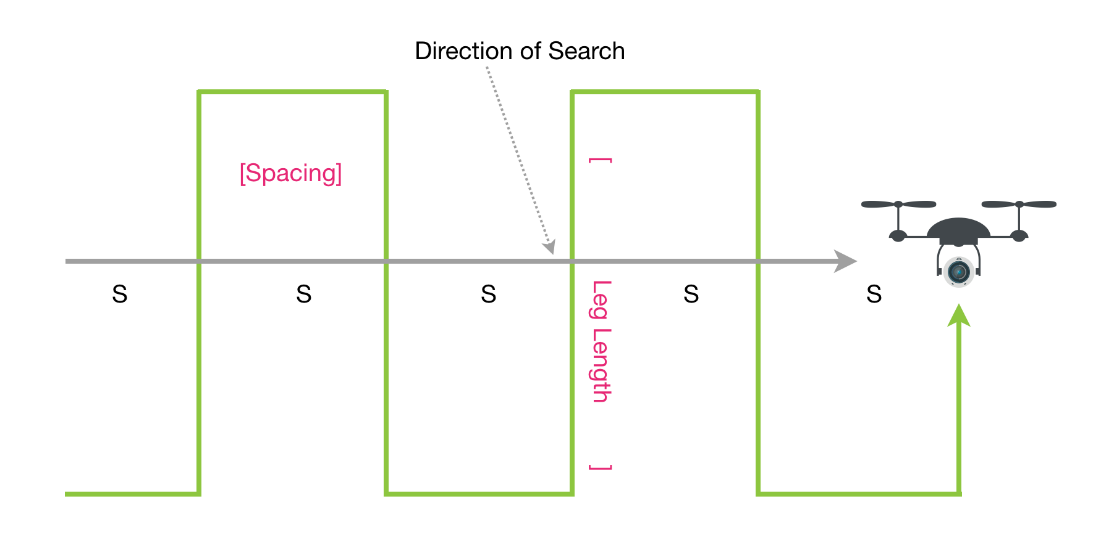Creeping line

The search pattern tool allows to the creation of a specific flight route over an area for search and rescue operations. Once the search&rescue area is marked and the camera’s profile and flight height (AGL) defined, a meander-like flight trajectory covering the whole search area is automatically created without gaps in the camera's footprint.
Search spacing is calculated according to the horizontal FOV of the selected camera’s profile and set flight height (see Camera’s parameters).
All transversal flight segments are parallel, all side segments are located on a convex perimeter of the area's shape (concave shape perimeter is not supported).

Flight speed – flight speed of the drone for a segment.
Turn type – the way vehicle passes segments. Turn type is selected from the list of available turn types for a particular vehicle profile.
Camera – a payload assigned to a vehicle profile. If multiple cameras are assigned to the vehicle, it is possible to select which camera will be used to scan the area.
Camera’s parameters - search spacing is derived based on the parameters of the selected camera profile:
d - sensor width
f - focal length
fov = 2 arctan(d / (2 f))
and thus:
tan(fov / 2) = d / (2 f) (eq. 1)
spacing = (2 height) tan(fov / 2)
using:
spacing= (2 height) (d / (2 f))
The final equation for spacing is:
spacing= (height * d) / f
where height - AGL altitude (parameter), d - sensor width (camera profile), f - sensor focal length (camera profile).

Flight height – altitude of flight along the area.
AGL Tolerance, m – allows flying straight trajectories over the slightly waved landscape, by specifying how precisely the UAV should follow the required altitude above ground. To maintain specified height additional waypoints will be added if the difference in height is larger than AGL tolerance. The smaller the AGL tolerance value, the greater number of waypoints will be generated. If AGL tolerance is set to 0 (zero) UAV’s altitude will be constant throughout the route, but a lot of additional waypoints will be added.
Direction angle - to change the direction of the main scanning progress. By default, the algorithm calculates a route in a bounded polygon so that the main course of the scan is performed in the direction of "South-North".
Side overlap (%) – the ratio of the overlap into neighboring frames (located in neighboring rows). Value is set in the range from 1% to 90%.
Parameters for the execution of actions:
• Every point – actions will be added for all waypoints;
• At start – the algorithm will add action only for the first waypoint;
No action at last point – will remove the action of the last waypoint.
Avoid obstacles – a flag to be set if buildings have to be considered when planning the path. Do not uncheck without a specific need to do so.
Updated almost 2 years ago
